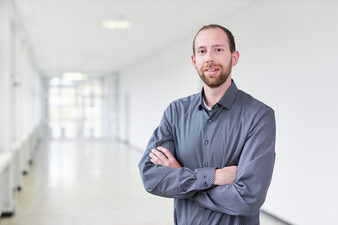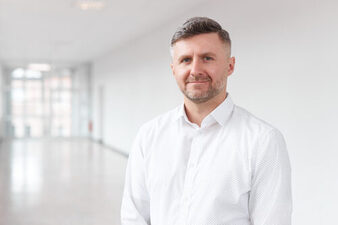Profile
The acoustics laboratory at Fachhochschule Dortmund covers the acoustic and vibration design of vehicles and machines. Acoustics is an interdisciplinary field of mechanical engineering, which means that research and teaching focus on several areas:
- Design of vehicle acoustics for vehicles with combustion engines and electrically powered vehicles
- Noise emissions from machines, in particular approaches for low-noise designs and noise protection
- Virtual methods of acoustics for the simulation of noise and vibration behavior
- Acoustic measurement technology and test methods
- Physiological and psychological effects of sound on humans
- Psychoacoustic phenomena and connection to technical noise generation
- Technical measures to influence noise and vibration comfort
- Acoustics as a product feature and sound design
- Active acoustic methods: Active Noise Cancellation (ANC), Active Vibration Control (AVC) and Active Sound Design (ASD)
Equipment
- Semi-anechoic chambers for acoustic tests
- Measurement technology for acoustic investigations: Microphones (class 1), acceleration sensors (uniaxial and triaxial), modal shaker, modal hammer, etc.
- Test track for road tests with workshop and office area
- Modern data acquisition methods and front ends, such as SQuadriga III and Sqobold
- Analysis and simulation software for acoustic tests (HEAD Acoustics - ArtemiS, Recorder, ..., B&K Pulse, MATLAB / Simulink, etc.)
- Software tools for the development of acoustic functions (MATLAB / Simulink, DSP Concepts Audio Weaver, etc.)
- Virtual vehicle environment for the design and research of new acoustic functions
- Audio workstation for sound design and definition of target sound concepts (DSP Concepts Audio Weaver, various DAWs and extensions, embedded systems for applications in test vehicles)
Unfortunately, the 360° image of the acoustic laboratory provided here cannot be displayed.
Service & Offer
- Acoustic measurements and analysis of machines and vehicles
- Acoustic optimization of systems and components
- Measurement of maximum permissible noise emissions from motor vehicles in accordance with UN R 51.02, UN R51.03 and DIN ISO 362-1
- Measurement of minimum required noise emissions from electrically powered vehicles in accordance with UN R 138 and FMVSS 141
- Research into new sound concepts for electrically powered vehicles and soundscaping
- Test subject studies and listening studies to determine sound quality and evaluation metrics
Contact
Contact person and management
Benjamin Hecker, M.Eng.
Phone
Office hours
Please send requests for consultation hours by e-mail.
Prof. Alessandro Fortino, Dr.
Phone
Office hours
Please send requests for consultation hours by e-mail.




